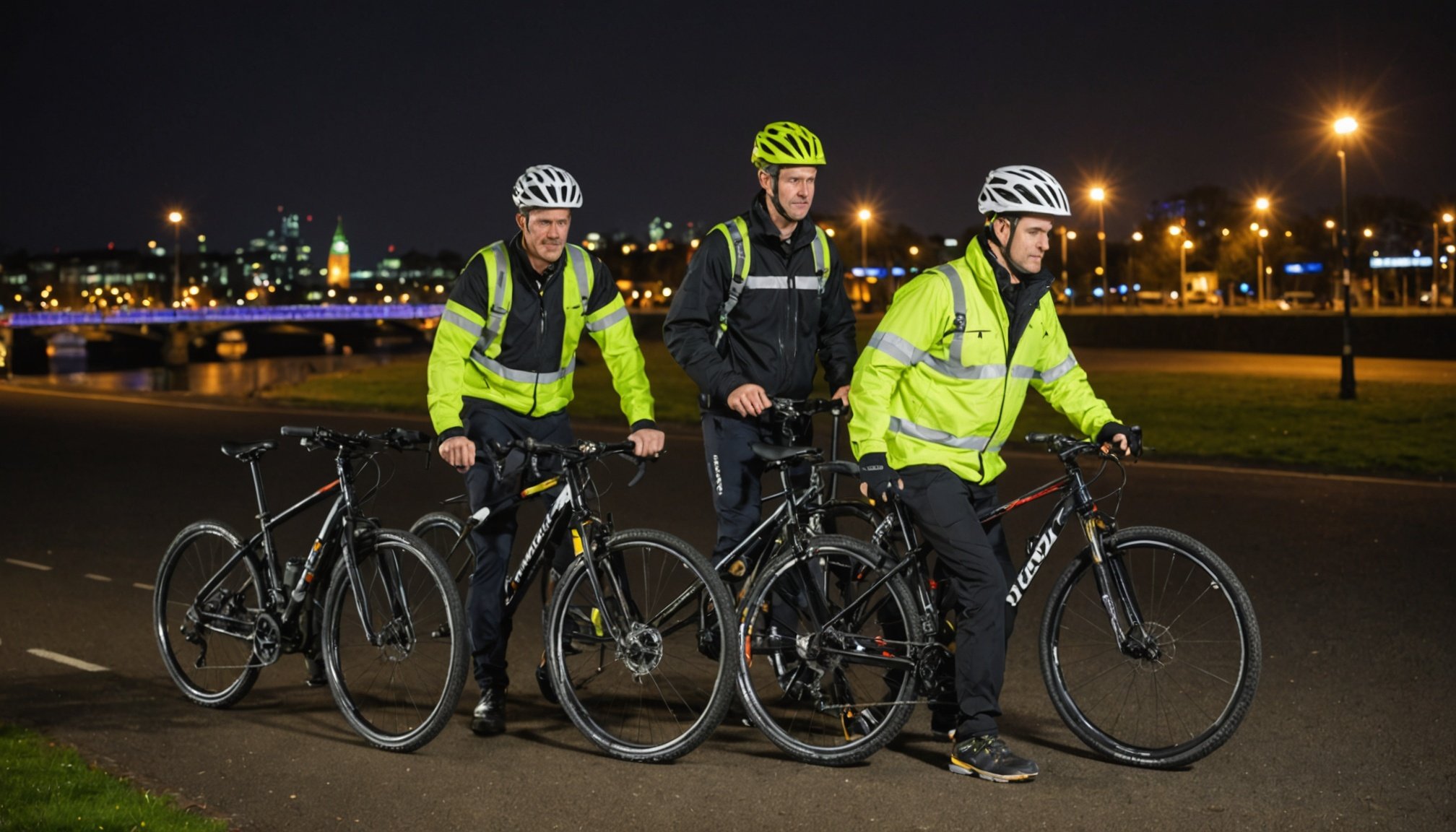Cycling at night can offer a refreshing experience, from peaceful roads to starry skies. However, it also presents unique challenges, particularly in terms of safety. As cyclists, you must take extra precautions to ensure your visibility and protection while navigating the dark streets of the UK. This article will delve into the essential safety gear you should consider before embarking on your nocturnal cycling adventures.
Visibility Equipment: Lights and Reflective Gear
Visibility is paramount when cycling at night. Without proper lighting and reflective gear, you put yourself at significant risk. The law in the UK mandates that cyclists must have a white front light and a red rear light when riding after dark. These lights help illuminate your path and ensure that other road users can see you.
Additional reading : What are the best cycling routes in the UK for long-distance rides?
When selecting front lights, consider those that offer at least 200 lumens to ensure adequate brightness. Look for models with multiple settings, including flash and steady modes, to increase your visibility to drivers. Rear lights are equally important; many cyclists prefer those that can be mounted on the back of the bike or worn on clothing.
In addition to lights, reflective clothing and accessories play a vital role in enhancing visibility. Vests, jackets, and even arm and leg bands made from reflective materials can significantly improve your chances of being seen. Consider outfitting your bike with reflective tape or stickers. This added layer of visibility can make a substantial difference in low-light conditions, especially at intersections or busy roads.
Have you seen this : How can I choose the right bike type for commuting in urban areas of the UK?
Protective Headgear: The Role of Helmets
While visibility is crucial, your safety is equally important, and this is where helmets come into play. Wearing a helmet is a fundamental aspect of cycling safety at any time, but it becomes even more vital at night when visibility is reduced. A properly fitted helmet can protect your head in the event of a fall or collision, which is critical when navigating dark roads.
When choosing a helmet, look for models that comply with safety standards, such as the British Standards Institute (BSI) regulations. Features such as a snug fit, adjustable straps, and ventilation can enhance comfort, making you more likely to wear it consistently. Some helmets even come equipped with integrated lights or reflective elements, providing added visibility and safety during night rides.
Moreover, it’s essential to replace your helmet if it has been involved in an accident, as it may no longer provide the protection required. Remember, the goal is to ensure that you remain safe while enjoying the freedom that comes with cycling, especially during nighttime.
Comfort and Protection: Clothing Choices for Night Cycling
Comfort and protection go hand in hand when you’re cycling at night. The right clothing can keep you warm, dry, and visible, significantly enhancing your overall riding experience. It’s crucial to choose apparel designed for cycling, as these garments are often made from breathable materials that wick moisture away from your skin.
Layering is an effective strategy. Start with a moisture-wicking base layer to keep sweat at bay, followed by an insulating layer that retains heat. Finally, a waterproof outer layer can protect you from rain and wind. Look for jackets and trousers that include reflective materials or bright colors to increase your visibility to other road users.
Additionally, consider wearing gloves and thermal socks, especially in colder months. These items not only add comfort but also help maintain grip on the handlebars and pedals. Investing in padded shorts can help prevent discomfort during longer rides. With the right clothing, you’ll be able to focus on the joy of cycling without being distracted by discomfort.
Navigating the Terrain: Essential Accessories for Night Cyclists
As you prepare for night cycling in the UK, there are several accessories that can enhance both your experience and safety. First, consider investing in a good quality lock. Cycling at night might mean stopping in areas that feel less secure. A sturdy lock can help protect your bike from theft.
Furthermore, a map or a navigation app designed for cyclists can assist in planning your route. Familiarizing yourself with the route during the day can help you navigate more comfortably at night. Knowing where you’re going allows you to focus on safety rather than getting lost.
A portable phone charger is another practical accessory to consider. In the event of an emergency, having a charged phone can be invaluable for calling for assistance or navigating. Additionally, carrying a small repair kit can help you manage minor issues, such as a flat tire. Being prepared for the unexpected is part of making your night cycling experience enjoyable and stress-free.
In conclusion, cycling at night in the UK can be a rewarding experience when you prioritize your safety. Investing in the right safety gear, including visibility equipment, protective headgear, and suitable clothing, is essential. Moreover, choosing the right accessories can further enhance your cycling experience, ensuring you’re well-prepared for the challenges that darkness can bring.
By taking these precautions seriously, you can enjoy the freedom of cycling while minimizing risks. With proper preparation, your night cycling adventures can be not only safe but also exhilarating.











